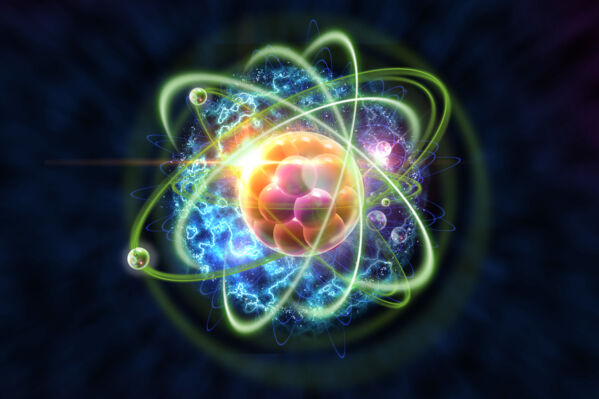In a groundbreaking development by scientists, the heaviest antimatter atomic nucleus ever created has been produced, consisting of only four antimatter particles, which is already a significant amount. Antimatter is created by colliding similar particles together until they split and explode. Despite the high cost of particle accelerators, antimatter research holds significant value in theoretical and medical fields.
Antimatter may sound like a concept from science fiction, but it is very much a reality. The positron, perhaps the most famous form of antimatter, powers robots in Isaac Asimov’s science fiction novels and the androids in “Star Trek.” Discovered about 100 years ago, the positron is the antimatter counterpart of the electron. In the 1950s, scientists also confirmed the existence of antiprotons through high-speed collisions of protons.
Located at Brookhaven National Laboratory in Long Island, New York, the Relativistic Heavy Ion Collider accelerates particles and collides them, recreating conditions close to the Big Bang to split particles into matter and antimatter. Recently, scientists used this collider to discover a form of antimatter known as antihyperhydrogen-4, a heavyweight antimatter atomic nucleus. This new research was published on August 21 in the journal “Nature.”
This significant discovery consists of one antiproton, two antineutrons, and one anti-Lambda hyperon, all particles ejected from intense collisions. However, to grasp the significance, a deeper explanation is required.
The existence of antimatter particles was inevitable. When a particle undergoes a powerful collision, it should theoretically be destroyed. However, this results in an antimatter particle, and the two fly apart in tiny nanoseconds. Due to their opposite charges, particles and antimatter particles attract each other back and then annihilate. The entire process occurs within a minuscule timeframe and demands an immense amount of energy, making it extremely challenging to create anything larger than individual antimatter particles in colliders.
But this feat is not entirely impossible. Over the years, scientists have generated pairs of particle-antiparticle, with the aim of the new discovery team being to use a specific particle to create the heaviest antimatter particle to date: the antimatter counterpart of hyperhydrogen. Hyperhydrogen is a heavy hydrogen nucleus containing an additional particle, comprising a proton, two neutrons, and a hyperon called Lambda, which has a different triquark composition internally from the protons and neutrons in the same family. The anti-Lambda hyperon, counterpart of Lambda hyperon, is unstable and leads to the rapid splitting of the entire antimatter nucleus.
However, before this occurs, the core of the antimatter nucleus indeed forms the antimatter mirror image of heavy hydrogen – the antihyperhydrogen atomic nucleus. In this case, it is the core of anti-hyperhydrogen-4, an isotope containing four antimatter particles.
“After analyzing approximately 6.6 billion heavy ion collision events in the experiment data,” explained Dr. Junlin Wu, a doctoral student involved in the project, “we reconstructed the antihyperhydrogen-4 from its decay products and identified approximately 16 signals of the antihyperhydrogen-4.” In other words, this antimatter isotope decays so rapidly that its chemical and physical characteristics exist only in the residues it leaves behind, including anti-helium atomic nuclei.
Research on antimatter is a crucial component of cosmology and astrophysics, as these reactions occur naturally in the very young universe and continue under certain specific conditions in the universe. Additionally, antimatter powers positron emission tomography (PET scans) where positrons within the body interact with electrons, annihilating to produce gamma rays that can be measured to evaluate various physiological processes.
This application provides a compelling reason to further explore the mysteries of antimatter. However, our understanding of antimatter remains limited. At a fundamental level, we struggle to explain why, in conditions where matter and antimatter are produced and separated in equal proportions, we observe so much matter and so little antimatter in the universe. Where did most of the antimatter go? ◇

